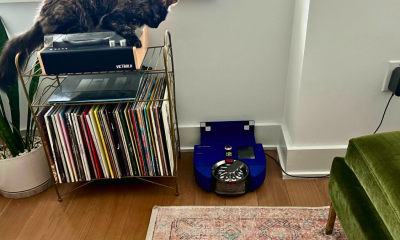Technology
ICANN removing price caps could change the web for good

Net neutrality has been and a few big tech control most of the internet. Now things might get even worse for consumers with a decision that could send prices for .org, and eventually .com, domains skyrocketing, making running a website prohibitively expensive.
Domain names are how people access information in their browser, acting as an address for each website. ICANN (Internet Corporation for Assigned Names and Numbers) is the organization that governs the web’s domain name systems. And it just opened the door to monopolies charging whatever they want for registering a web address.
Internet monopolies
Ironically, the U.S. government formed ICANN in 1998 to prevent a monopoly.
In the early 1990s, the government decided to privatize the domain name registry. Network Solutions, which had previously been managing the system, was the single bidder for the contract. There were less than 5,000 domain names registered at this time.
As the registry for .com, .net, and .org domains for the entirety of the 1990s, Network Solutions charged as much as $100 per registration. As antitrust concerns mounted, ICANN forced Network Solutions to separate its registry, which runs the domain extensions, from its registrar business, which sells the domains to customers.
This move led to a sharp decrease in domain prices with the registry selling them to registrars at a wholesale price of $6.
The company would later for $21 billion in March 2000 during the dot com bubble to Verisign, the registry where .com and .net has remained since.
As part of an ICANN proposal to help spur competition, Verisign agreed to give up the .org top level domain (TLD) in 2003 in exchange for an extension to its .com contract. The nonprofit Public Interest Registry (PIR) was formed and awarded the .org extension by ICANN.
Today, there are more than 350 million domains registered in TLD extensions. The .com TLD makes up more than 150 million of those names. There are currently more than 11 million .org domain names.
The decision that could change the web
A little over a month ago, ICANN to a proposal to lift the previously installed price caps on .org domain name registration after the contract with its registry expired. In ICANN’s new deal with PIR, it can now charge nonprofits and other individuals anything it would like to register a domain.
Similar price cap removals were also approved for domain registries Afilias and Neulevel, which run the and TLD extensions, respectively.
This is despite the fact that when ICANN first made its proposal earlier this year, more than 3,500 comments were submitted by members of the public — and 98 percent of them were in support of keeping price caps, according an from Namecheap.
So, what does this mean for consumers? Can the .org registry now charge hundreds of dollars per year for a single domain name?
“Yes, Public Interest Registry is now free to charge whatever price they determine for any .org domain name,” confirmed Namecheap CEO Richard Kirkendall in an email. He also explained that PIR can now charge even more for registrations for specific names that it determines to be “premium” quality. While domain speculators already charge higher fees for premium domains on the aftermarket, this move would essentially cut out the middleman and allow the registry to directly profit.
Higher prices could be especially devastating to non-profits, a group including the YMCA, AARP, and NPR pointed out during the comment period.
“This will accordingly introduce new budgetary uncertainty to the class of organizations that can least afford such uncertainty,” the group said.
Despite overwhelming opposition, ICANN went ahead with the move.
“When prices are increased, registrars will need to pass the additional cost to customers,” said Kirkendall. “For nonprofits, small businesses, and customers from emerging markets, increased domain name registration costs will be particularly harmful.”
If a .org registrant, such as a nonprofit, can no longer afford its .org domain, the name could become available for use by nefarious actors. These new registrants can then use the domain to engage in spam or phishing activities, which could create security issues across the entire web.
Your .com domain is next
It doesn’t end with .org domains either. There’s likely more price cap removals on the way. ICANN’s contract with Verisign, the registry that runs the popular .com TLD extension, is up in 2024. The current contract includes price caps, which is why almost anyone can afford the $10 per year domain registration.
Kirkendall says “this is the ultimate endgame. The .com TLD represents over 70% of all registered domain names. Because it is commercial in nature, it is more likely to lead to price increases.”
Verisign also operates the .net domain. The contract renewal for that extension is in 2023.
“Removing price caps from those agreements would give Verisign the ability to raise prices for two TLDs that represent approximately 80% of all registered domain names,” warned Kirkendall.
According to ICANN, the the organization is seeking to renew registry contracts without price caps is to bring uniformity to its deals for both legacy TLDs, like .com, and new generic TLDs (gTLDs), like .ninja and .xyz. Agreements for the latter didn’t include price caps and some domains extensions, such as , cost thousands of dollars per year to register.
As Kikrendall points out, hundreds of millions of .com, .net, and .org domains were registered before the introduction of the new gTLDs and the new rules that came along with them.
“There have been trillions of dollars invested in the marketing of these TLDs that have established them as the prime virtual real estate of the internet world,” he explains. “These TLDs have a stranglehold on the market which is virtually impossible to break.”
“If ICANN truly wants to create competition and level the playing field, they would open up the bidding process for the management of these legacy TLDs by other registries,” Kirkendall continued.
The battle continues
However, it seems the price cap fight is . Namecheap has already filed a request to ICANN to reconsider removing the price caps.
“This unilateral action by ICANN staff is unprecedented, and we felt we needed to stand up on behalf of our customers,” Kirkendall said. “If the ICANN Board rejects the request, Namecheap is preparing to execute on other options.”
Those options, which are in ICANN’s bylaws, include a third-party review process, an investigation by an independent Ombudsman, and a mechanism that would allow ICANN international advisory committees to organize and file a dispute with ICANN’s board.
Most people have likely heard of net neutrality, the principle that internet service providers should treat all content, traffic, and sources equally.
From the FCC’s of the rules in 2010 to its repeal under the Trump administration in 2017, net neutrality has received plenty of media attention over the past decade — and rightfully so. The idea the ISPs, acting as broadband gatekeepers, could create different tiers of internet access, depending on the price you pay, would change the web as we know it forever.
ICANN could also drastically change the web. At a time when internet users should be encouraged to take control of their data, lifting the domain name price caps will create an extra barrier for those looking to retain ownership of their content.
Domain names are often referred to as digital real estate. ICANN may have just created a future digital affordable housing crisis.

-

 Business3 days ago
Business3 days agoAPI startup Noname Security nears $500M deal to sell itself to Akamai
-

 Business6 days ago
Business6 days agoYoshi Mobility has come a long way since gassing up cars on the side of the road
-

 Entertainment3 days ago
Entertainment3 days agoHow to watch ‘Argylle’: When and where is it streaming?
-

 Business4 days ago
Business4 days agoUS think tank Heritage Foundation hit by cyberattack
-

 Entertainment3 days ago
Entertainment3 days agoNASA discovered bacteria that wouldn’t die. Now it’s boosting sunscreen.
-

 Entertainment4 days ago
Entertainment4 days agoCrypto and taxes: Which forms you need to file
-

 Entertainment3 days ago
Entertainment3 days agoDyson 360 Vis Nav robot vacuum review: Dyson should just stick to upright vacuums
-

 Business7 days ago
Business7 days agoSprinto raises $20M to bring automation to security compliance management




















